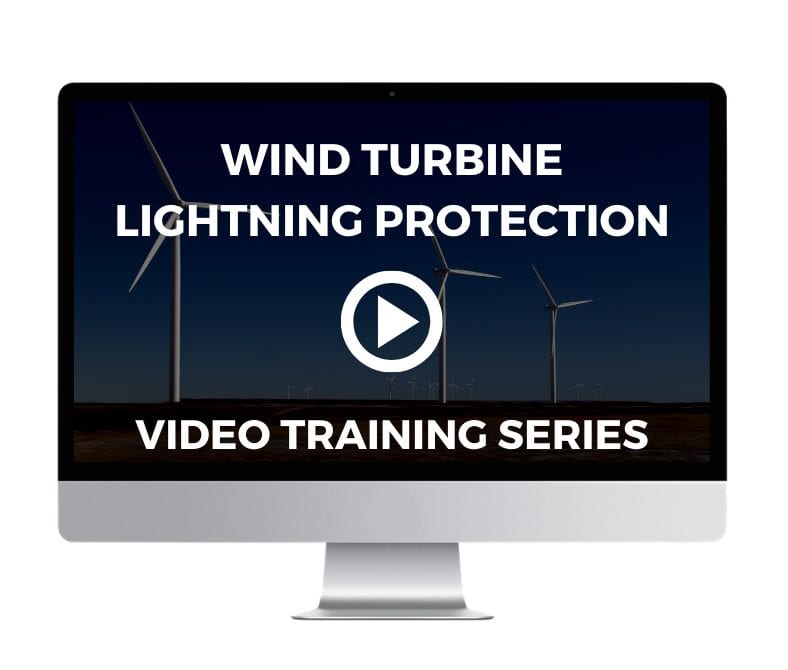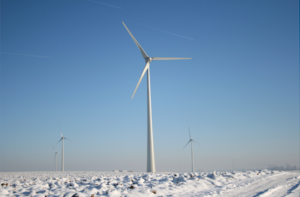Lightning doesn’t always strike the highest or most conductive object. There are many photos of lightning strikes near wind turbine farms where the bolts completely miss the turbines and their blades, and sometimes these strikes hit water.
In most cases, lightning will strike the highest object. Wind turbines are very vulnerable during a long storm as there can be hundreds of lightning strikes in a small area. The odds of lightning striking a turbine are high. While the type of lightning and the frequency of lightning strikes varies from site to site, regardless of geographic location, weather conditions or other environmental elements, lightning damage is consistently one of the greatest risks to wind production operations. It only makes sense to protect your turbine blades and your total wind operation investment with Weather Guard StrikeTape segmented lightning diverters.
Did you know? A blade struck once is likely to be struck again, due to degradation of dielectric properties since it left the factory.
StrikeTape enhances a blade’s lightning receptors by directing the lightning to the receptors and away from the GFRP structure. The proprietary products looks similar to others on the market, but the unique design and high-quality materials and manufacturing delivers better results than other products. Also important: StrikeTape does not negatively impact your blade aerodynamics. (Even more important: working with a partner who understands wind turbine aerodynamics!)
Get more information on how StrikeTape works, read the FAQs, and see the latest StrikeTape specifications here.
When to Install Lightning Diverter Strips on Your Wind Turbine Blades
Weather Guard StrikeTape diverters can be quickly and easily installed during blade manufacture or in the field. Most wind park operators schedule installation during regular maintenance periods, when technicians are already in place performing routine turbine inspections, cleaning the blades, or handling other test and wind turbine maintenance tasks. There are no structural modifications to the blade.
We’ve had more than one customer marvel that, “it installs in 30 minutes, max, per blade!” And time is money, of course, when you have technicians on ropes. That’s the initial good news – little downtime to install. Over the long term, though, our customers are impressed at how well it performs. There’s a reason we say it’s the best in the world against rain erosion – because it’s been tested, and it is. So, if your equipment (or your technicians) are telling you that your blades may have lightning damage, installing diverter strips before the rainy season will help avoid unscheduled downtime.
StrikeTape lightning diverter strips are used by some of the largest and most profitable wind farm operations in the world. Have questions about how to improve your wind turbine lightning protection? Ask us.
Allen Hall served as a Senior Technical Specialist for Lightning Technologies, Inc. for 10 years and has worked in lightning protection of wind turbines and aircraft for 20+ years. He is an FAA designated engineering representative (DER).
Updated May 2020: Are you looking for Shine Wire diverters for wind turbines? You’re in the right place.





